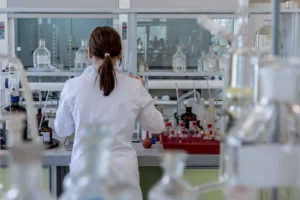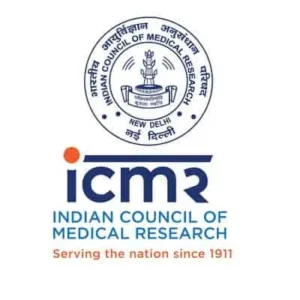Last Updated on February 21, 2024 by The Health Master
Medical Device
The Department-related Parliamentary Standing Committee on Chemicals and Fertilisers has put forth crucial recommendations to bolster the domestic of medical device industry in India.
This move aims to reduce the country’s dependence on imports and elevate the growth of the medical device industry.
In this article, we delve into the Committee’s recommendations and the challenges faced by the sector.
Understanding the Committee’s Recommendations
1. Government Support through GST Reduction
The Committee emphasizes the need for government support in the form of reduced Goods and Services Tax (GST) on domestically produced medical devices.
High GST rates of 12% to 18% on these devices have created a challenging environment for domestic manufacturers.
2. Custom Duty Concessions for Import of Components
Short-term custom duty concessions on the import of components are suggested to alleviate the burden on manufacturers.
This strategic move aims to make the medical device industry in India more profitable than importing them.
3. Extension of Phased Manufacturing Programme (PMP)
The Committee recommends extending the Phased Manufacturing Programme (PMP) to include more medical devices.
This gradual approach ensures the development of a self-sufficient ecosystem for the manufacturing of raw materials, subparts, and parts.
Examining the GST and Customs Duty Structure
4. Domestic Manufacturing Challenges
The Committee highlights the challenges faced by domestic manufacturers, including high GST rates and low custom duty on imported finished medical devices.
This has led to a dependence on imported devices, creating a complex situation.
5. Inverted Duty Structure
An anomaly in Basic Custom Duty Rates has led to an inverted duty structure, putting domestic medical device industry at a disadvantage.
The cost of domestically produced items becomes higher than imported ones, hindering the industry’s growth.
6. Phased Manufacturing Programme (PMP) Implementation
To address the inverted duty structure, the Department of Pharmaceuticals has introduced the Phased Manufacturing Programme, focusing initially on Medical X-Ray Machines and specified subassemblies/parts.
Government Support and Industry Development
7. Need for Competitive Advantage
The Committee stresses the necessity of inter-ministerial and inter-governmental strategies to make promotional schemes more effective.
Competitive advantages for manufacturing in India should outweigh the benefits of importing medical devices.
8. Importance of Government Support
To promote private player investments, the government must make domestic products competitive.
Reducing GST rates and providing custom duty concessions are essential steps to support the ‘Make in India’ initiative.
9. Short-Term Measures for Import of Components
As a short-term measure, the Committee suggests attractive custom duty concessions on the import of essential components used in manufacturing medical devices until the industry achieves self-sufficiency in raw material production.
Challenges Faced by the Medical Device Industry
10. Current State of the Industry
India’s medical device industry primarily focuses on low to moderate-end devices, with a 70% import dependence for high-end devices.
The sector faces challenges such as minimal investment in research and development, inverted duty structure, and a lack of skilled manpower.
11. Impediments to Growth
Issues like limited tax concessions, long gestation periods in technology induction, and inadequate industry-academia collaboration hinder the industry’s growth.
The Committee emphasizes the immediate attention these challenges require.
Future Outlook and Recommendations
12. Growing Market Potential
Despite challenges, the medical device industry in India is poised for substantial growth, with the market expected to reach $50 billion by 2030.
The Committee urges the government to align its efforts with the industry’s potential.
13. Reviewing Past Promotional Schemes
The Committee finds the promotional schemes launched by the Department in 2020 to be unproductive.
Efforts must be made to identify and remove bottlenecks for effective scheme implementation.
14. Strengthening Domestic Industry
Recognizing the importance of a stable domestic medical device industry for sustaining exports, the Committee calls for a concerted effort to remove obstacles hindering the implementation of promotional schemes.
15. A Call to Action
In conclusion, the Committee’s recommendations provide a roadmap to strengthen India’s medical device industry.
It is imperative for the government to act promptly, addressing challenges and fostering an environment conducive to domestic manufacturing.
Disclaimer: This article contains information derived from the source mentioned below. Our team utilized an AI language model to rewrite and present the news or article in a unique format.
FAQs
- Why is reducing GST crucial for the medical device industry?
Reducing GST is essential to make domestically produced medical devices competitive in the international market, aligning with the ‘Make in India’ initiative. - How does the inverted duty structure affect domestic manufacturers?
The inverted duty structure leads to higher costs for domestically produced items, making them less competitive than imported devices. - What role does the Phased Manufacturing Programme play in industry development?
The Phased Manufacturing Programme aims to gradually increase basic custom duty, focusing initially on specific medical devices to address manufacturing challenges. - Why is short-term custom duty concession on component imports recommended?
Short-term concessions on component imports are crucial until the industry achieves self-sufficiency, ensuring a steady supply for manufacturing. - What steps can the government take to promote private investments in the medical device industry?
The government should provide competitive advantages through reduced GST rates and custom duty concessions to encourage private investments.
Procedure to obtain license for manufacturing of Medical Devices
Procedure for registration of Medical Devices: CDSCO
Qualification and Experience: For Technical Staff in Medical Devices
Registration for sale of Medical Devices: Procedure and conditions
Latest Notifications: Medical Devices
Classifications of Medical Devices under the provisions of MDR 2017
Notified Bodies for Medical Devices
Updated list of Notified Bodies for Medical Devices
Updated list of Medical Device Testing Laboratories (MDTLs)
Forms: All types of Medical Devices
Schedules: All types of Medical Devices
FAQs on Medical Devices Rules, 2017
The Urgency of Expiry Dates on Doctors’ Prescriptions
NPPA’s move to Fix Prices on Anti-Diabetic FDCs
Changes in Homoeopathy Drug Regulations
FSSAI: Food Labelling and Display – Chapter-1
Laboratory Waste Management, Types and Its Disposal
How to Become a Skilled Manufacturing Chemist in the Pharma Industry
Unlocking Efficiency: Online Systems in Drug Regulation
Under Scrutiny: The Safety Evaluation of 3 Widely Used Pain, Cough and Cold Drugs
NPPA fixed retail price of 39 formulations: February 2024
NABL’s Extended Deadline for Accredited Laboratories
For informative videos by The Health Master, click on the below YouTube icon:
For informative videos on Medical Store / Pharmacy, click on the below YouTube icon:
For informative videos on the news regarding Pharma / Medical Devices / Cosmetics / Homoeopathy etc., click on the below YouTube icon:
For informative videos on consumer awareness, click on the below YouTube icon:












